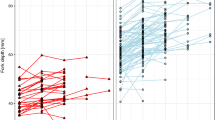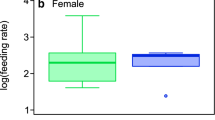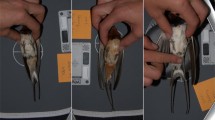Abstract
The long outermost tail feathers of barn swallows Hirundo rustica have white spots that are larger in males than in females and in adults than in juveniles. Spot size increases with age among adults and is positively correlated with tail length. We tested the functional significance of these white spots by randomly assigning males to either of three groups during spring: (1) subjected to a considerable reduction in the size of all spots using a black permanent pen; (2) subjected to a small reduction in the size of all spots; or (3) a control group with no reduction. Experimental treatment significantly affected the total number of offspring produced per season: breeding tended to be delayed and second broods were less frequent after a considerable reduction in the size of the males' tail feather spots. White parts of feathers lacking melanin were more often found to be the site of feather breakage than the melanised parts of similar width. Furthermore, white tail spots were the preferred feeding site of feather-eating Mallophaga and, since long-tailed males have fewer Mallophaga than short-tailed males, long-tailed males may pay a lower cost for their large white tail spots than short-tailed males. Hence, the cost of increased risk of feather breakage at white tail spots and the non-random distribution of feather lice among individuals will render tail spots a reliable signal of phenotypic quality.
Similar content being viewed by others
Author information
Authors and Affiliations
Additional information
Received: 25 May 1998 / Accepted after revision: 4 January 1998
Rights and permissions
About this article
Cite this article
Kose, M., Møller, A. Sexual selection, feather breakage and parasites: the importance of white spots in the tail of the barn swallow (Hirundo rustica). Behav Ecol Sociobiol 45, 430–436 (1999). https://doi.org/10.1007/s002650050581
Issue Date:
DOI: https://doi.org/10.1007/s002650050581




